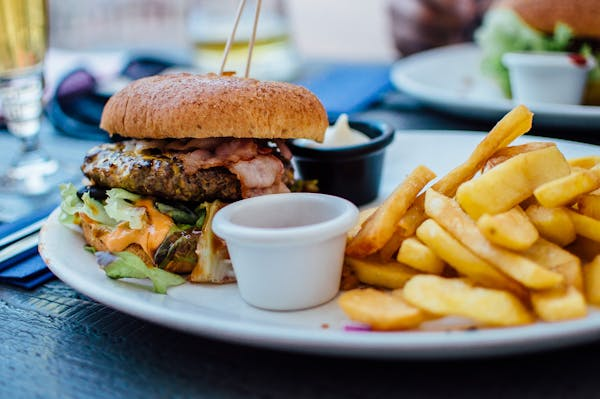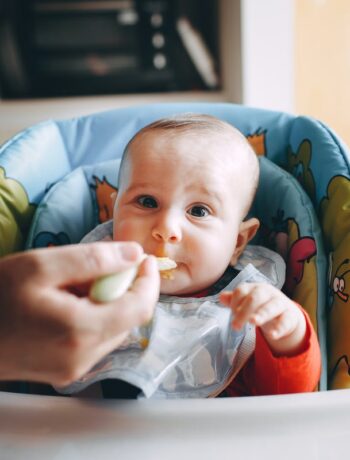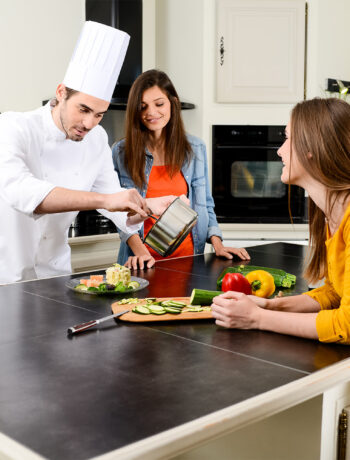Food is one of life’s great pleasures, providing nutrients to keep us healthy and the flavors that bring smiles to our faces.
However, when food isn’t properly stored or prepared, it can quickly become unsafe and make people sick. This is especially true for those with compromised immune systems or allergies.
In the UK, there are around 2.4 million cases of foodborne illness each year according to UKRI, resulting in over 180 deaths.
Medical treatment for these preventable illnesses costs the economy over £1.5 billion annually.
With a little food safety know-how, we can avoid these risks and keep mealtimes safe and enjoyable for everyone.
For carers preparing meals for clients, children or the elderly, and for patients cooking for themselves, understanding proper food hygiene is absolutely vital. Let’s review the basics!
The Danger Zone ─ Temperature

Source: mountelizabeth.com.sg
Harmful bacteria that cause foodborne illness love temperatures between 8°C and 63°C.
This range is called the “Danger Zone” because it’s where germs multiply rapidly. Keeping hot foods hot (above 63°C) and cold foods cold (below 8°C) is one of the simplest ways to prevent bacteria growth.
Some key temperature tips:
- Use a food thermometer to check internal temperatures
- Keep refrigerators below 5°C and freezers at or below -18°C
- Refrigerate or freeze perishables within 2 hours of cooking
- Never leave food sitting out at room temperature for over 2 hours
- When reheating, get foods piping hot (above 75°C) all the way through
Cooking Thoroughly
Speaking of hot temperatures, ensuring food is cooked through to the safe minimum internal temp is crucial for destroying any bacteria present. Different types of food have different minimum cooking temperatures:
- Poultry like chicken or turkey: 75°C
- Ground meats like beef or pork: 71°C
- Seafood and fish: 63°C
- Eggs and foods containing eggs: 63°C
- Beef, pork, lamb steaks/chops: 63°C
Colour is never a reliable way to judge if meat, poultry or seafood is fully cooked. Using a food thermometer takes out the guesswork!
Cross-Contamination Caution

Source: agenciadeaprendizaje.bue.edu.ar
Bacteria can easily spread from one food product to another via kitchen surfaces, utensils, or our own hands. This cross-contamination is a major source of foodborne illness. To avoid it:
- Use separate cutting boards for raw meats and produce
- Never place cooked foods back on a plate that held raw items
- Wash all counters, utensils, and dishes with hot, soapy water after prepping raw foods
- Wash hands thoroughly with soap for 20 seconds before/during/after food handling
Imagine raw chicken juices dripping onto a cutting board, then slicing veggies on that surface – those droplets can transfer salmonella to your salad! Keeping everything clean is key.
The 4 Cs ─ Clean, Chill, Cook, Separate
Those last two points lead us to the “4 Cs” of food safety – Clean, Chill, Cook, and Separate. Following these four simple steps can greatly lower the chances of contracting a foodborne illness:
- Clean ─ Wash hands, surfaces, utensils, and dishes frequently with hot, soapy water
- Chill ─ Refrigerate perishable foods promptly, and keep cold foods below 5°C
- Cook ─ Use a food thermometer to ensure foods reach safe minimum internal temperatures
- Separate ─ Use different boards/utensils for raw meats vs. produce to avoid cross-contamination
With these 4 Cs in mind, you’ll create a much safer kitchen environment for meal preparation!
Food Allergies and Intolerances
Beyond general food safety, it’s also critical for carers to understand food allergies and intolerances, especially when cooking for others. In the UK, around 2 million people have a diagnosed food allergy, with the most common triggers being:
- Eggs
- Milk
- Peanuts
- Tree nuts like almonds or cashews
- Fish
- Shellfish
- Wheat
- Soy
Even tiny amounts of an allergen can trigger symptoms like vomiting, diarrhea, hives, swelling, breathing issues, and even anaphylactic shock in severe cases.
Always check ingredient lists and avoid foods your client/patient is allergic to.
Food intolerances like lactose or gluten intolerance are different – the immune system isn’t involved, but these foods can still cause uncomfortable digestive issues. Pay close attention to special dietary needs and provide appropriate allergy-friendly options.
Soapbox Moment ─ Food Hygiene Ratings

Source: highspeedtraining.co.uk
As a quick soapbox moment, let’s discuss those familiar green and black food hygiene rating stickers you see at restaurants and food businesses.
Across the UK, venues that serve food legally must display these ratings based on their food safety practices:
- 5 Rating: Very good
- 4 Rating: Good
- 3 Rating: Generally satisfactory
- 2 Rating: Improvement necessary
- 1 Rating: Major improvement necessary
- 0 Rating: Urgent improvement required
Would you want to eat somewhere with a rating below 3? Probably not! These ratings give transparent insight into the food safety of that establishment. Don’t be afraid to ask about a place’s rating when ordering food or looking for a new grocer.
You Have the Power!
At the end of the day, carers and patients themselves are the final lines of defense against foodborne illnesses.
By following simple food safety guidance around temperatures, cooking thoroughly, avoiding cross-contamination, and being allergy aware, you can dramatically reduce illness risks.
Taking the time to handle food properly prevents serious health issues, medical costs, and unpleasant experiences. It’s a small effort that yields huge rewards.
So the next time you’re in the kitchen, keep these tips top of mind.
Training for Carers and Care Home Kitchen Staff

Source: helpinghandshomecare.co.uk
While educating patients and individuals on food safety basics is important, professional carers and care home kitchen teams should receive comprehensive food hygiene training.
Proper staff training is actually a legal requirement for any facility serving food to residents.
These in-depth courses cover safe food handling processes in detail, from food deliveries and storage to cooking and serving. They instruct on preventing cross-contamination, maintaining proper cooking temperatures, understanding food allergies/intolerances, cleaning and sanitation protocols, and much more.
Regular refresher training ensures kitchen staff stay up-to-date on the latest food safety guidelines and regulations. Many courses also provide a food hygiene certificate upon completion that employees can use to demonstrate their competency.
For care homes, hospitals, and other care providers, investing in robust food safety instruction is a must for protecting vulnerable residents and patients. Having qualified, knowledgeable kitchen teams is one of the best ways to prevent serious foodborne illnesses from occurring.
With the proper training and procedures in place, patients and residents can enjoy nutritious, flavourful meals without worrying about getting sick.
And well-fed clients lead to better care outcomes overall!





